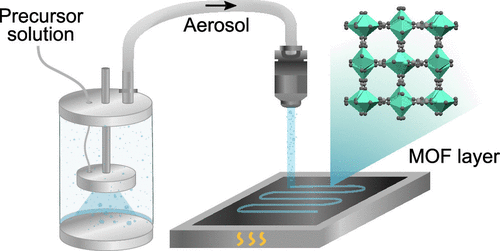Nanoporous Metal–Organic Framework Thin Films Prepared Directly from Gaseous Precursors by Atomic and Molecular Layer Deposition: Implications for Microelectronics
Authors: Jenna Multia, Dmitry E. Kravchenko, Víctor Rubio-Giménez, Anish Philip, Rob Ameloot, and Maarit Karppinen
Journal: ACS Appl. Nano Mater. (2023)
Abstract
Atomic/molecular layer deposition (ALD/MLD) allows for the direct gas-phase synthesis of crystalline metal–organic framework (MOF) thin films. Here, we show for the first time using krypton and methanol physisorption measurements that ALD/MLD-fabricated copper 1,4-benzenedicarboxylate (Cu-BDC) ultrathin films possess accessible porosity matching that of the corresponding bulk MOF.

You may read the full paper here.
Nanoporous Metal–Organic Framework Thin Films Prepared Directly from Gaseous Precursors by Atomic and Molecular Layer Deposition: Implications for Microelectronics




